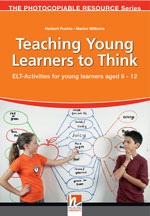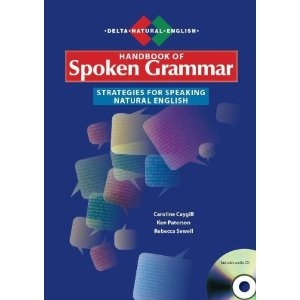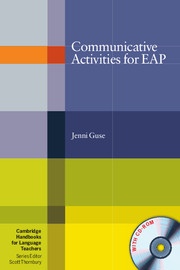Short book reviews
Hanna Kryszewska, Poland
Hanna Kryszewska is a teacher, teacher trainer, trainer of trainers. She is a senior lecturer at the University of Gdańsk, and EU Teacher Training College where she trains pre-service teachers. She is co-author of resource books: Learner Based Teaching, OUP, Towards Teaching, Heinemann, The Standby Book, CUP, Language Activities for Teenagers, CUP and a course book series for secondary schools: ForMat, Macmillan. She is also co-author of a video based teacher training course: Observing English Lessons. Hania is a Pilgrims trainer and editor of HLT Magazine. E-mail: hania.kryszewska@pilgrims.co.uk

Life: Upper Intermediate. P. Dummett, J. Hughes and H. Stephenson. Heinle CENGAGE Learning. (2013) ISBN-13: 978-1-133-31572-,. pp.184. This coursebook is part 5 of a new six level general English course for young adults and adults. It teaches language in a way which involves an exciting exploration of the world. The authors use texts, photographs and films produced or published by National Geographic magazine, thanks to which the learning experience is unique. On the methodology level the authors use a competency-based syllabus which teaches grammar, vocabulary, the four skills, functions and pronunciation in a communicative way preparing the learners to use language in real life contexts. Additionally the authors implement a critical thinking syllabus which helps the learners to understand the texts at a deeper level. To be fair, you find the usual topics found in coursebooks like relationships, storytelling, science and technology, art and creativity, development, alternative travel etc. However, the treatment of the subject is really fresh, e.g. in the unit on relationships we have texts on: relationships between people and animals, the generation gap in modern China, immigration and settling in a new country, and keeping in touch with your family and your roots. The whole package is very rich: the student’s book comes with a DVD ( 43 mins running time), the workbook with an audio CD, the teacher’s book with a class audio CD and, finally, there is an interactive Whiteboard CD-ROM with many features like ‘zoomable’ pages and tools for creating your own interactive tasks . This is a truly modern course.

Teaching Young Learners to Think: ELT-Activities for young learners aged 6-12. H. Puchta and M. Williams. Helbling Languages. (2011). ISBN 978-3-85272-428-7, pp231. This book has been published in The Photocopiable Resource Series which is written by prominent figures in English Language Teaching. It offers innovative activities explained step by step and accompanied by A4 photocopiable, ready to use materials for the class. The book in question addresses one of the new areas which has recently come into focus, i.e. combining teaching language skills with key thinking skills. There is new and stronger evidence that young learners learn language better if they are cognitively engaged. One of the ways is CLIL, an approach which is by now well established in the ELT class, the second is teaching thinking skills through problem solving.
When we talk about thinking skills there are 12 categories or areas which are reflected in the types of activities in the book: comparing, categorising, sequencing, focusing attention, memorising, exploring space, exploring time, exploring numbers, creating associations, cause and effect, making decisions, solving problems and creative thinking. These activities offer the kind of challenge children thrive on and thanks to which they become motivated and enchanted with the language class. On the language level the activities are pitched at beginner to A2 upwards level, and so are very suitable for a young learners’ class in most countries. Some of the acitvities have been known for some time, but have never been pooled together with teaching thinking skills in mind. So it is good they have all been put together along with many many more new and innovative activities, accompanied by a sound and informative rationale. Let’s hope that the next book in the series will be devoted to critical thinking, another buzz word in education.

Idioms Organiser: Organised by metaphor, topic and key word. J. Wright. Heinle CENGAGE Learning. (2002) ISBN-13:978-1-899396-06-1, pp.296. This publication is an old classic which has been republished by Heinle and so I would like to remind HLT readers about this useful book. It is a comprehensive idioms practice book containing 1800 idioms organised by metaphor, topic and key word. It can be used in class or self-study at intermediate level and upwards. Why should these idioms be taught and practised? As Jon Wright says in the message to the learner: Words don’t come singly. Indeed. Learners need to learn these frequently used chunks as one bit of language which may have a literal or metaphorical meaning. Becoming aware of these patterns is helpful in learning idiomatic English. ( Similar observations have been made my Michael Rundell, Editor-in-Chief of the Macmillan English Dictionary) Potentially a book with many exercises teaching and practising idioms could be very dry, however, the Idioms Organiser is livened up by relevant cartoons or quotes. You may dip into the book or work through it systematically.

A Handbook of Spoken Grammar. Strategies for Speaking Natural English. K. Paterson, C. Caygill and R. Sewell. (2011) DELTA Publishing. ISBN 978-1-905085-54-5, pp 95. This handbook has been published in the DELTA Natural English series and it taps into an area that is increasingly more frequently addressed in language classes and ELT materials: spoken grammar. It looks at the features of spoken language and what patterns native speakers use when they speak. It is based on recent corpus research as reflected in The Longman Grammar of Spoken and Written English and The Cambridge Grammar of English. The authors have divided the book into twenty units which present the key features of speech such as common structures, ways of modifying meaning, sounding more polite, reporting speech in a more immediate way, heading and fronting, etc.. The book is aimed at learners at intermediate level and above but could easily be adapted for lower levels. It can be used for self study or in class as part of a speaking course or to supplement the coursebook. It comes with a CD with sample utterances the learners can model themselves on in everyday communication or when preparing for oral exams. Unfortunately the recorded utterances are one or two sentences long only, so the students do not hear examples of longer model performances.

Communicative Activities for EAP. J. Guse. (2011) Cambridge. ISBN 978-0-521-14057-7, pp 318. This publication belongs to the successful Cambridge Handbooks for Language Teachers series. As the title promises the book offers a wealth of ideas and resources to help teachers jazz up their English for Academic Purposes courses, also those preparing the learners for the IELTS and TOEFL exams. The book offers activities which are fun and interactive, yet addressing the ‘serious’ content of an EAP class. The activities in the book are divided into 6 sections: the four skills, vocabulary and grammar, and their main focus is communication, authenticity, learner autonomy, and critical thinking and analysis. The activities often require the use of authentic materials or on-line resources like the visual thesaurus; fortunately the book gives examples of websites from which such texts could be obtained or accessed. Also the book comes with a CD-ROM which provides example texts and support materials which can be projected onto the screen or printed out and photocopied. The activities are suitable for young adult or adult learners at the intermediate level and above. They are motivating, challenging and fun, even if they are put into dry sounding sub-categories like: code user, text maker, text user and text agent.

Identity, Motivation and Autonomy in Language Learning. ed. G. Murray, Xuesong Gao and T. Lamb. (2011) Multilingual Matters. ISBN 978-1-84769-372-3, pp 266. This book comes from a publishing house language teachers may not know very well. I believe they may benefit a lot from becoming familiar with their publications. Multilingual Matters is an international independent publishing house, with lists in the areas of bilingualism, second/foreign language learning and sociolinguistics, just to name a few. The volume in question explores the links between identity, motivation and autonomy in language learning. It contains 16 contributions from researchers coming from all over the world and different educational backgrounds. The authors take different perspectives to approach the subject. Contributions to Part 1 are devoted to the conceptual level (Emerging Theoretical Perspectives) and they address the issue of agency, metacognition, imagination, beliefs and self. Contributions to Part 2 are devoted to the practical level (Independent Learning Settings) and they refer to classroom practice, self access, distance learning etc. Part 3 of the book ( Cultures and Contexts) deals with a discussion on the best approaches which take identity, motivation and autonomy as their core concepts. A very informative and serious read.

Please check the Methodology and Language for Primary Teachers course at Pilgrims website.
Please check the Methodology and Language for Secondary Teachers course at Pilgrims website.
Please check the Teaching Advanced Students course at Pilgrims website.
Please check the Methodology for Teaching Spoken Grammar and English course at Pilgrims website.
Please check the How to be a Teacher Trainer course at Pilgrims website.


|